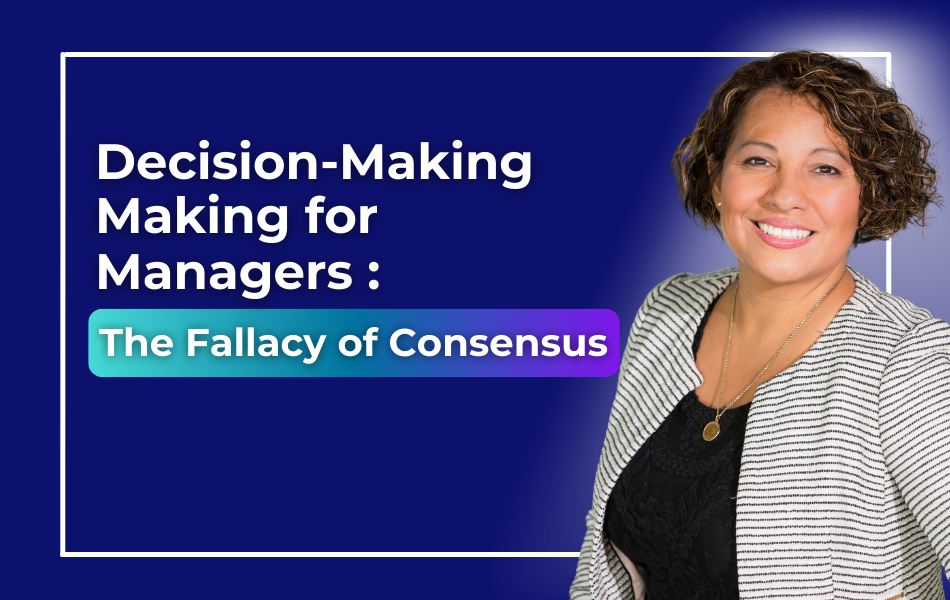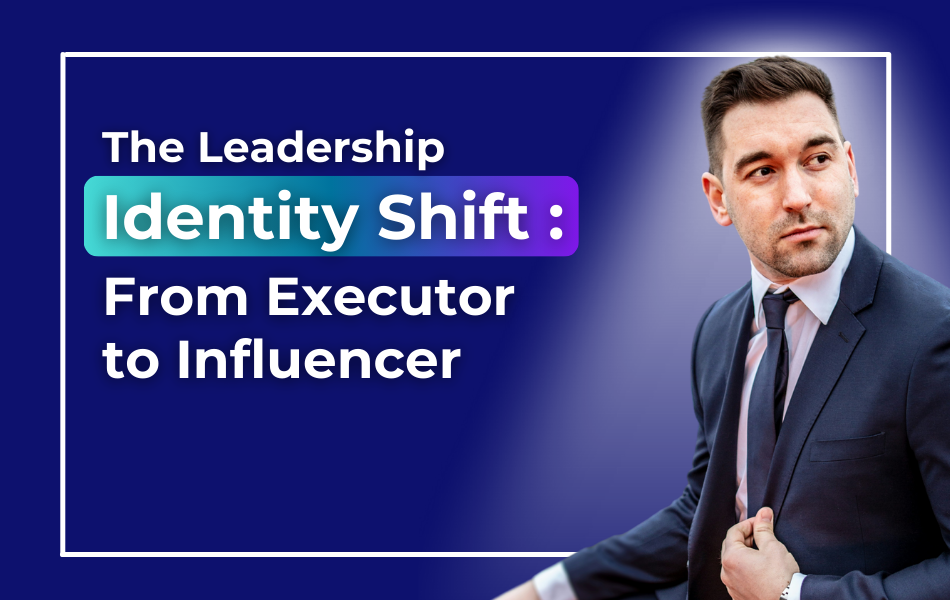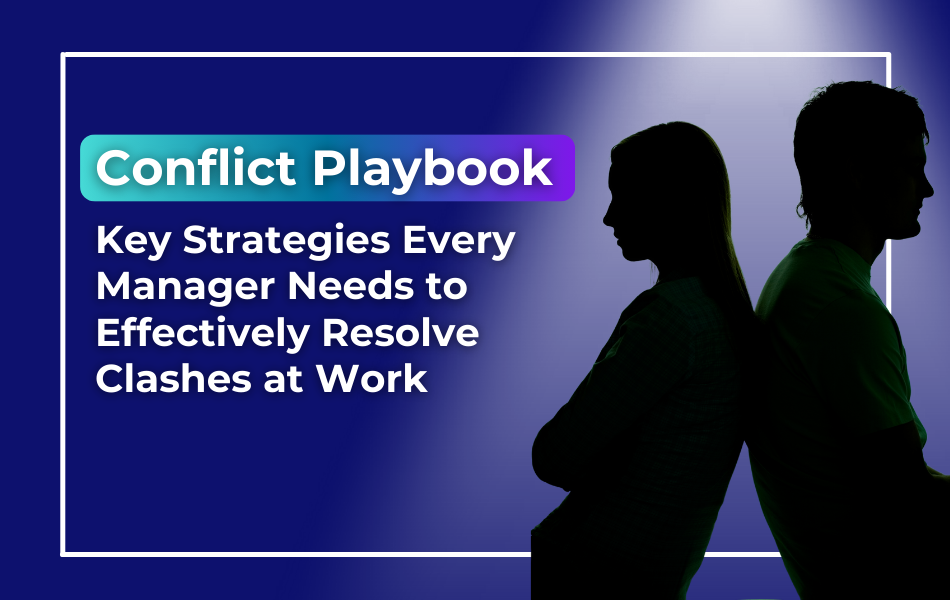
251. Decision-Making for Managers: The Fallacy of Consensus
Decision-Making for Managers: The Fallacy of Consensus
About this Episode
Ep. 251 – Many leaders believe that it’s important for them to get agreement from others before making a decision. Yet this consensus-focused approach often results in delayed projects, diluted ideas, and teams that only appear aligned on the surface.
In this episode, Ramona Shaw examines how the pursuit of consensus, while well-intentioned, can actually hinder team performance and decision-making. She shares practical insights from her work with startups and established organizations where consensus-seeking had unexpected consequences and what to do instead.
Ramona explores:
– The natural appeal of consensus and why it feels right
– What really happens in meetings when everyone seems to agree
– The connection between consensus and conflict avoidance
– A clear framework for when to seek agreement – and when not to
If you believe that a group of people with diverse perspectives makes for a better team, then aiming for actual consensus is a misdirected effort.
Watch it on YouTube HERE.
Reflective Questions:
– When has seeking agreement slowed down an important project?
– What decisions could have been made faster without full consensus?
– How often do team discussions end in safe but uninspiring compromises?
– Does quick agreement in meetings reflect true alignment or something else?
Episode 251 Transcript:
0:00:00 Ramona Shaw: This is episode 251 and we’re going to talk about the fallacy of consensus in the decision making process.
0:00:07 Ramona Shaw: Here are the two questions this podcast answers. 1. How do you successfully transition into your first official leadership role? And 2 how do you keep climbing that leadership ladder and continuously get promoted? Although the competition and the expectations get bigger, this show, The Manager Track podcast, will provide the answers. I’m your host, Ramona Shah. I’m on a mission to create workplaces where work is seen as a source of contribution, connection and personal fulfillment. And this transition starts with developing a new generation of leaders who know how to lead so everyone wins and grows.
0:00:43 Ramona Shaw: In the show, you’ll learn how to think, communicate and act as a confident and competent leader. You know you can be welcome to.
0:00:50 Ramona Shaw: This episode of The Manager Track podcast. In this episode, we’re going to tackle a critical challenge that affects organizations of all sizes. And this is the fallacy of consensus. If you ever sat through an endless meeting where everyone needs to agree before moving forward, or you watched a great idea get watered down in the name of group harmony, you’re already familiar with this problem. So let’s start with why consensus is so appealing. And I see this a lot when we coach individuals, but also when we debrieve 360 degree feedback and we’re talking about the competency of decision making.
0:01:31 Ramona Shaw: Think about the last time you had to make a difficult decision. Did you feel pressure to get everyone to agree before moving forward? If so, you are not alone. This is how we’re humans are wired. We’re looking for social connections. And so getting agreement from people actually feels rewarding from a neuroscience perspective. But on top of that, many leaders view consensus as the ideal form of decision making.
0:01:58 Ramona Shaw: Not only does it feel good, but it also seems to be the right approach. And it’s kind of easy to understand. It seems democratic. It seems inclusive and a great way to get everyone’s buy in for whatever idea that’s being proposed. To highlight this, I recently spoke with a startup CEO who told me I used to think that being a good leader who creates alignment means to get everyone to agree. But I later realized that I was actually avoiding conflict and hiding behind consensus to dodge making tough calls.
0:02:32 Ramona Shaw: And this gets to the heart of why many organizations default to consensus. It’s often more about avoiding conflict or opposition, or not wanting to appear too controlling than about making the best decision. But here’s where things get interesting and somewhat problematic. Let’s break down exactly why pursuing consensus can be dangerous for organizations and for you as a leader. Let’s look at an example.
0:03:00 Ramona Shaw: A tech company I worked with spent six weeks trying to reach consensus on a new product feature. By the time they finally launched that feature, their main competitor has already released something similar. And this isn’t unusual. Consensus decision making can create paralysis, especially as organizations grow larger. There are more people that we need to convince and to get their buy in before we can move on.
0:03:29 Ramona Shaw: Now, on top of that and the delay that that causes, there’s also the quality of the decision themselves that we have to look at. Here’s what Typically you start with a strong, innovative idea, but then as it goes through the rounds of consensus building, right, more and more stakeholders need to buy into it. Your team needs to buy into it. They have ideas that they want you to incorporate, and over time, it gets watered down or we’re complexifying something that wasn’t what the initial idea was intended to do. It’s like as people share their concerns, we’re removing the edges until you’re left with something that nobody hates, but also nobody loves either.
0:04:10 Ramona Shaw: And so this is particularly tricky when you have subject matter experts whose input gets diluted in the name of group agreement. I’m sure that you can think of at least one example in the last few months, if not many more, where exactly this happened. Something was started that seemed great and concise and doable with the resources at hand at the timeline that it was supposed to be implemented, only for them to get sucked into the loop of decision making and alignment seeking, consensus focused approach.
0:04:41 Ramona Shaw: Or the idea suddenly gets enlarged or it gets changed for it to no longer be what it originally was intended to do. So we see this all the time. But let’s quickly talk about the social dynamics. In larger groups, consensus often breaks down into something called groupthink. We see this often where especially more junior employees would routinely silence themselves in decision making meetings, not because they agreed, but because they didn’t want to be seen as troublemakers or for the ones to be further delaying the decision.
0:05:18 Ramona Shaw: Even though consensus was the starter goal, the existing power dynamics were still very much in play. They were just operating under the surface. So in an overt way, we may feel like we’re reaching consensus, but below the surface, underneath it all, we’re actually not reaching consensus. There’s something psychologists call the false consensus effect. It’s our tendency to overestimate how much others share our beliefs and behaviors. A product manager once told me, I was convinced everyone would love our new interface because everyone in our team meetings seemed to agree it turned out that people were just nodding along.
0:05:59 Ramona Shaw: So when we launched, we realized that users actually had different preferences. And when we surface those questions, people would say like yeah, I kind of had that thought or yeah, occurred to me or I was wondering about that during the process and the product mention said I was baffled that no one ever said anything. And all along I believe we’re on the same page. And I felt affirmed in my approach.
0:06:23 Ramona Shaw: What did I do wrong? Right? This is a common situation that many leaders find themselves in. So what are the alternatives to consensus seeking? So instead of defaulting to consensus, what organizations do and leaders do who make timely, high quality decisions, they use a mix of decision making approaches. Sometimes they might be consultative where they’re consulting other people and stakeholders, but it’s from the beginning very clear that there’s one person who will make the decision.
0:06:53 Ramona Shaw: Other times it might be a consent based focus where it isn’t about everyone to agree, but to make sure that we hear all objections, that we address those strong objections and then the decision maker takes that all into account and makes the best possible decision based on all the feedback that was solicited. And then other times it may be an autocratic approach where one person just makes a decision without even gathering feedback.
0:07:20 Ramona Shaw: That often is the right approach for something that is on fire, where someone just has to step in and make a decision for people to get move into action, be able to rectify the situation. Now, I’m not suggesting to abandon consensus entirely. It can work well in specific situations. For instance, in small, tight knit teams with high trust and aligned interests and people dare to speak up and speak honestly. In such situations, consensus can be very powerful.
0:07:48 Ramona Shaw: It can also be valuable for decisions that will significantly impact many people and require broad support in order for that successful implementation. In a scenario like this, while you won’t get everyone to agree with it, you’re looking to get a large amount of people to agree with it and you consider that consensus enough in order to move forward. Now I’m going to add some additional practical tips to help you think about your decision making.
0:08:15 Ramona Shaw: First, be crystal clear about your decision making process up front. So don’t let people assume everything needs consensus. For example, you could say, hey, I’m looking for input on this decision. But ultimately this will be a call made by the engineering team leads, so you set the stage up front or hey, this is a meeting where I’d like to present what we intend to do. This is our plan. I’m looking for feedback and things we might not have Considered to this meeting, we will consolidate and debrief your suggestions and then decide how to move forward as a project group. In this case, you’re saying you as a stakeholder, we’re wanting to hear your input, but ultimately the project group will decide.
0:08:55 Ramona Shaw: Second suggestion, set time limits and have fallback plans. So if you hope for consensus but it cannot reach by a certain point who makes the call and how will it be made? So thinking ahead of this scenario can really help you stay on track and make sure you’re not falling into that trap where you’re seeking consensus and now you’re delaying the decision, which actually makes you come across to others as indecisive. And likely your decision making approach is becoming less effective. Third, you might even want to consider using a facilitator for important group discussions or group decisions.
0:09:32 Ramona Shaw: They can help you manage the process and ensure all voices are heard without letting the discussion drag on indefinitely. So, especially if you are the one with authority in the room, sometimes it’s good for you not to be the one talking, but to have someone else on the team be facilitating the conversation and for you to actually speak last. So everyone feels more comfortable sharing their opinion honestly because they haven’t yet heard yours. If you jump in early on or you allude to what your opinions are, you might shut down people who are not comfortable speaking against authority and you’ll never hear what they truly think.
0:10:11 Ramona Shaw: Finally, and perhaps the most important, recognize that different decisions require different approaches. So strategic decisions might need more consensus building than the tactical ones. Emergency decisions may need a more authoritative approach to it. The key is matching your decision making process to the situation at hand and to do so intentionally. Most of the times when we see leaders who fall into a decision making trap, it’s that they have a default style, something that they personally prefer, like seeking consensus.
0:10:44 Ramona Shaw: And that is what they apply most of the time, whether or not it is the most effective. So really think about what will be the best approach here going forward. It may be consensus based, it may not. It’s important for you to know the difference and then play with different approaches and be upfront with your team and explicit about what your decision making process will be. So this is what I wanted to share about the consensus fallacy.
0:11:06 Ramona Shaw: I hope that you think about how these ideas might apply to your organization and your own personal style. And consider whether your pursuit of consensus or the pursuit of the consensus on your team might actually be holding you or your team back from making better, faster decisions. As usual, if you know other people if you have colleagues, peers, friends who would benefit from listening to this as well, please share the episode.
0:11:31 Ramona Shaw: We very much appreciate it. And with that, we’ll see you next week at another episode of The Manager Track podcast. Bye for now.
0:11:37 Ramona Shaw: If you enjoyed this episode, then check out two other awesome resources to help you become a leader people love to work with. This includes a free masterclass on how to successfully lead as a new manager. Check it out at archova.org/Masterclass. The second resource is my bestselling book, the Confident and competent New Manager how to quickly rise to success in your first leadership role. Check it out at archova.org/
0:12:04 Ramona Shaw: books or head on over to Amazon and grab your copy there. You can find all those links in the show notes down below.
REFLECTION & DISCUSSION QUESTIONS
- What recent decisions got watered down because too many people needed to agree?
- How do “consensus” discussions change when senior leaders share their opinion first?
- When was the last time you chose consensus over making a clear decision yourself?
RESOURCES MENTIONED
- Check out the Complete Guide: Building Effective New Managers
- Get more information on the Executive Presence Intensive Program HERE.
- Learn how to turn your 1-on-1 meetings from time wasters, awkward moments, status updates, or non-existent into your most important and valuable meeting with your directs all week. Access the course and resources here: ramonashaw.com/11
- Have a question or topic you’d like Ramona to address on a future episode? Fill out this form to submit it for her review: https://ramonashaw.com/ama
- Schedule a strategy call with Ramona HERE.
OTHER EPISODES YOU MIGHT LIKE
- Episode 74 – How My APS Method Helps (New) Managers Succeed
- Episode 155 – 4 Insights from Running a New Manager Training Program
WHAT’S NEXT?
Learn more about our leadership development programs, coaching, and workshops at archova.org.
Grab your copy of Ramona’s best-selling book ‘The Confident & Competent New Manager: How to Rapidly Rise to Success in Your First Leadership Role’: amzn.to/3TuOdcP
If this episode inspired you in some way, take a screenshot of you listening on your device and post it to your Instagram Stories, and tag me @ramona.shaw.leadership or DM me on LinkedIn at linkedin.com/in/ramona-shaw
Are you in your first manager role and don’t want to mess it up? Watch our FREE Masterclass and discover the 4 shifts to become a leader people love to work for: www.archova.org/masterclass
Don’t forget to invest time each week to increase your self-awareness, celebrate your wins, and learn from your mistakes. Your career grows only to the extent that you grow. Grab your Career Journal with leadership exercises and weekly reflections here: ramonashaw.com/shop
Love the podcast and haven’t left a review yet? All you have to do is go to ramonashaw.com/itunes and give your honest review. Thanks for your support of this show!
* Disclaimer: Shownotes may contain affiliate links. That means that I am awarded a small commission for purchases made through them, at no added cost to you.







